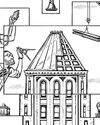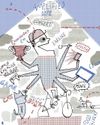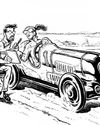
For organizations managing through a crisis, trust is paramount. Em-ployees and customers need to know that leaders are able to guide them through uncertainty and make the best decisions possible, and leaders need to know that the people executing their decisions are doing so in earnest, to the letter of the law. Of course, organizations must also look ahead to the post-crisis world, in which trust remains critical, but they’ll also need to identify efficiencies to support recovery.
The good news is that there is a part of the organizational structure that can help build trust and drive efficiency: compliance. The importance of compliance itself isn’t news. In a trust-based world, the brands, products, and services perceived as trustworthy are highly effective at attracting and retaining customers. Many leaders have also learned that one key breach can be very costly, to both their organization’s profits and its reputation. And they are keenly aware of the complex regulatory landscape they face. In PwC’s 23rd Annual Global CEO Survey, 36 percent of chief executives in a range of industries reported being extremely concerned about overregulation, ranking it the top threat to their organization’s growth prospects. (The survey was conducted in the fall of 2019, before the coronavirus pandemic took hold.)
This story is from the Autumn 2020 edition of strategy+business.
Start your 7-day Magzter GOLD free trial to access thousands of curated premium stories, and 9,000+ magazines and newspapers.
Already a subscriber ? Sign In
This story is from the Autumn 2020 edition of strategy+business.
Start your 7-day Magzter GOLD free trial to access thousands of curated premium stories, and 9,000+ magazines and newspapers.
Already a subscriber? Sign In

Transforming information into insight
Focus on six organizational elements to build a world-class data and insights capability.

THE URGENT NEED FOR SOPHISTICATED LEADERSHIP
The pandemic has highlighted a series of paradoxes inherent to the work of leaders. What comes next will depend on how well leaders face up to them.

The road to successful change is lined with trade-offs
Rather than trying to convince people your change initiative is the right one, invite them to talk openly about what it might take to implement it: the good, the bad, and the frustrating.

Sustaining productivity virtually
Maintaining productivity levels among remote employees is an enduring challenge. Here are five ways to help businesses and employees thrive while people work at home.

FORWARD TO normal
Entertainment and media companies are building business models that are resilient to the enduring changes in consumer behavior ushered in by COVID-19.

How leaders can promote racial justice in the workplace
Embrace four principles to turn today’s diversity, equity, and inclusion initiatives into sustained progress.

CREATING THE OFFICE OF THE FUTURE
In a remodeled world, it is vital for companies to reinvent ways of working.

Consumer companies must take leaps, not steps
As shoppers show how quickly they can adapt to external shocks, retailers will need to radically reconfigure their business models.

Businesses can fast-track innovation to help during a crisis
“Unrealistic” timelines can actually work. Here’s how.

Agility and experience management work better together
Many companies achieve early wins with separate transformational efforts, then stall. But if combined and enhanced using “return on experience,” or ROX, measures, these two programs can unlock each other’s potential.